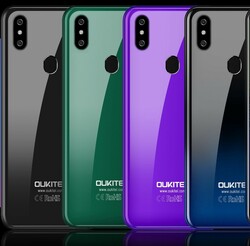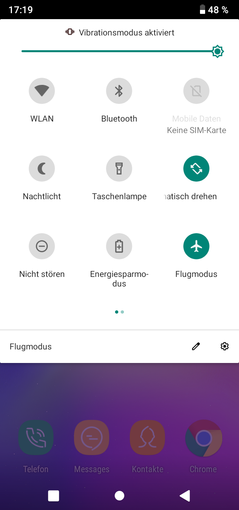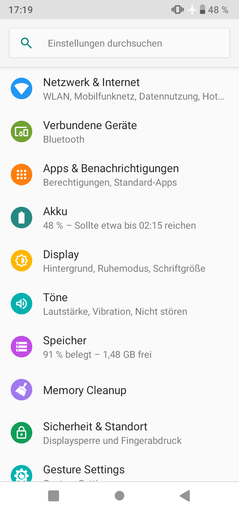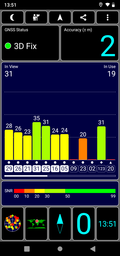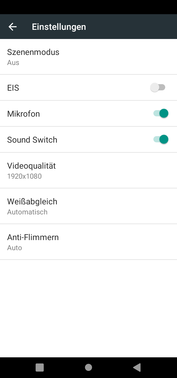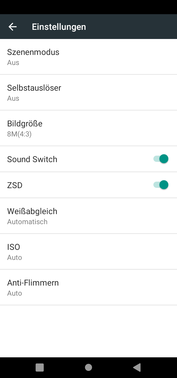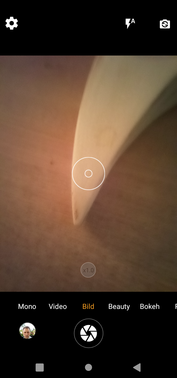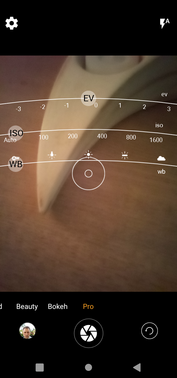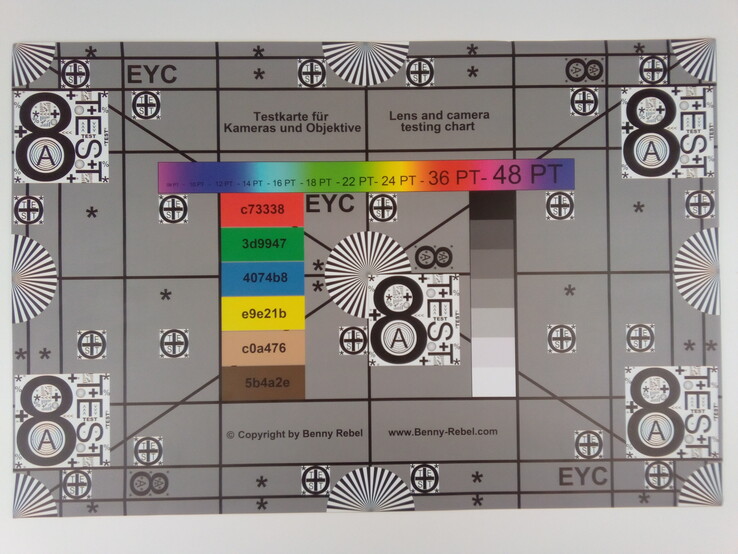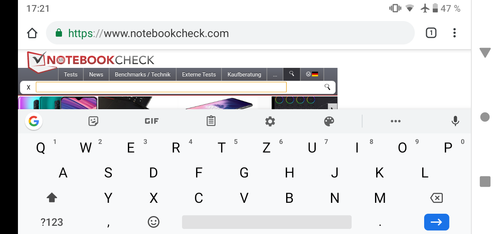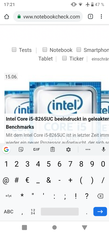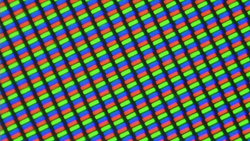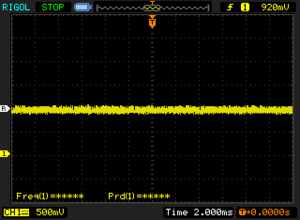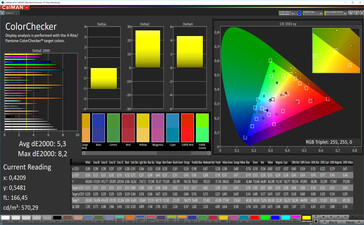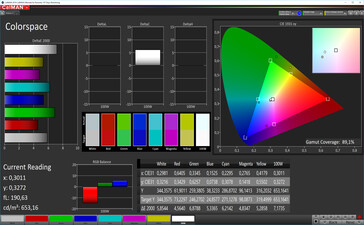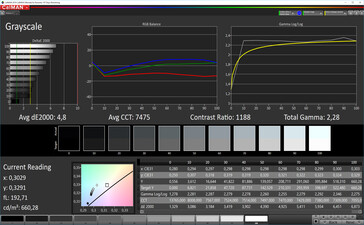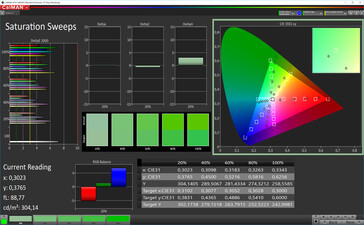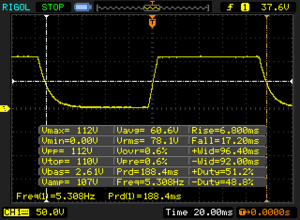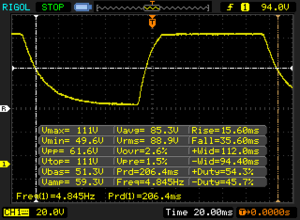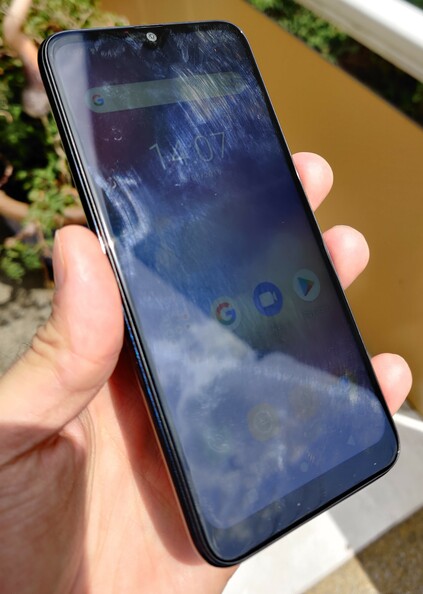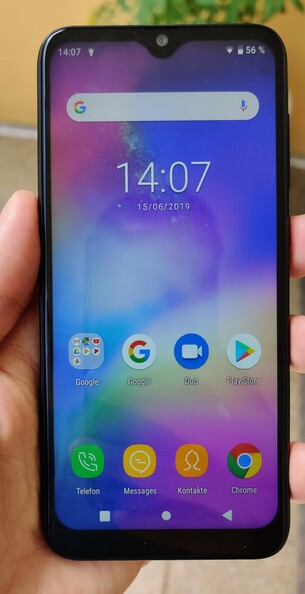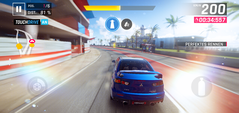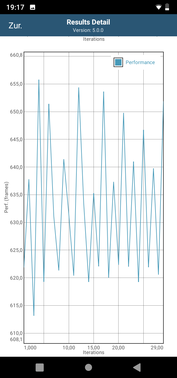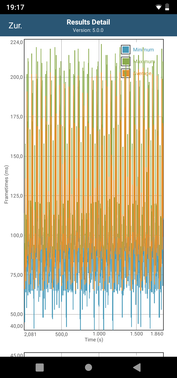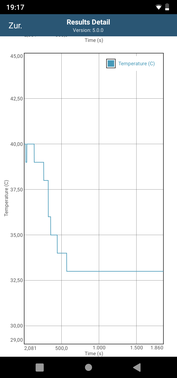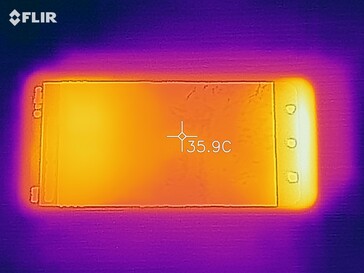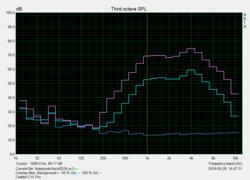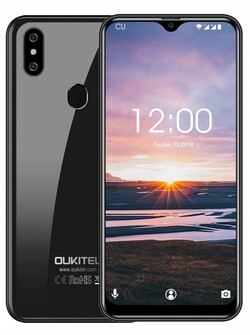Oukitel C15 Pro Smartphone Review: A weak budget handset with a bright display
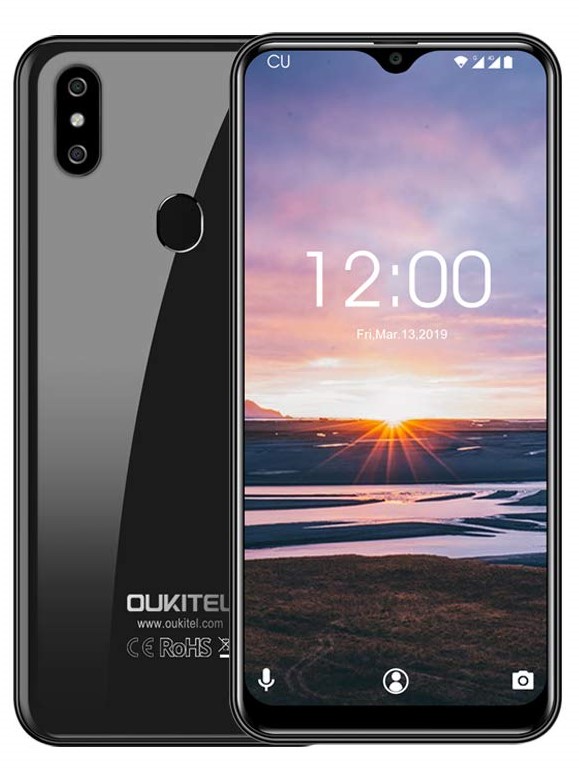
Oukitel aims its C-series smartphones at price-conscious buyers who are after a modern looking handset. We have already subjected the C13 Pro to our tests, and now it is the turn of the C15 Pro, a sub-€100 (~$112) smartphone that has comparatively thin bezels and a teardrop-shaped notch. On the shape of it, the 6.08-inch display should be one of the C15 Pro’s highlights. It is to a certain extent, which we shall cover in the Display section of this review. Inexplicably, Oukitel has equipped the device with a 600p panel, which looks woefully low resolution compared to most modern smartphones.
The Chinese manufacturer has also included a MediaTek Helio A22 MT6761 SoC, 2 GB of RAM and 16 GB of eMMC flash storage. Oukitel advertises the C15 Pro as the world's first Helio A22 smartphone, but the reasons why this is nothing to shout about we shall explain in the Performance section of this review. The company has included dual 8 MP and 2 MP rear-facing cameras along with a 5 MP front-facing sensor.
The C15 Pro currently retails for around €90 (~$100), which puts it in contention with the likes of the Huawei Y6 (2019), Nokia 2.1, TP-Link Neffos C9A, Xiaomi Redmi 6A and the Xiaomi Redmi Go. We shall also compare our review unit against its stablemates, the Oukitel C13 Pro and the Oukitel U25 Pro.
Case
The C15 Pro is a plastic and glass sandwich, the front of which Oukitel has covered in Asahi scratch-resistant glass. The glass tapers slightly into the plastic frame, giving the display an 81% screen-to-body ratio.
The quality of workmanship and choice of materials are decent for a budget handset, although the plastic back looks cheap. We expect as much from sub-€100 (~$112) smartphones, so the C15 Pro does not lose any points here. Behind the back case sit the two nano-SIM card slots and a microSD card reader, the placement of which feels a bit old school in 2019. The battery is not removable though.
Oukitel has placed the power and volume buttons on the right-hand side of the C15 Pro, both of which sit firmly in their frames. The buttons are easy to reach, but they are a bit spongy for our tastes.
Connectivity
The C15 Pro includes an FM radio, a fingerprint sensor and a 3.5 mm headphone jack. There is also a 3,200 mAh battery, which is charged by the USB 2.0 micro USB port on the underside of the device. The port also supports USB On-The-Go (OTG), which allows you to connect peripherals such as a keyboard and mouse should you wish to do so. The C15 Pro cannot wirelessly stream video to external monitors though.
Oukitel has included a paltry 16 GB of eMMC flash storage, of which around 10 GB is available upon first booting the C15 Pro. Thankfully, the device supports up to 128 GB microSD cards, which it can format as additional internal storage. This allows the C15 Pro to save apps and data to microSD cards, although it cannot read the exFAT file system, so it is limited to reading files smaller than 4 GB. The device also supports dual nano-SIM cards and has dedicated slots for all three cards.
Software
The C15 Pro ships with Android 9.0 Pie, something of a rarity for a budget smartphone. Our review unit had up to date security patches installed at the time of our tests too.
Oukitel sprinkles a few in-house flourishes atop of Android 9.0 Pie, but it is a mostly stock experience. Nonetheless, the software on our review unit would not install any third-party applications for some reason, save for the preinstalled Google suite of apps and services.
Moreover, Oukitel has only certified the C15 Pro to DRM Widevine L3, which restricts it to only streaming DRM protected content from streaming services such as Amazon Prime Video and Netflix in standard definition. The device only has a 600p screen, so it could not display HD content even if it had L1 certification.
Communication & GPS
The C15 Pro supports Bluetooth 5.0, which is another surprise for this budget smartphone. The device lacks an NFC chip though. The latter is a shame as it means that the C15 Pro cannot be used with services such as Google Pay.
The smartphone supports all modern Wi-Fi standards up to IEEE 802.11 n, which means that it can connect to 2.4 GHz or 5 GHz networks. Our review unit maintained stable Wi-Fi reception throughout our tests and achieved a -41 dBm Wi-Fi attenuation when placed near our Telekom Speedport W921V router.
Our review unit only averaged around 70 MBit/s in our iperf3 Client Wi-Fi tests though, which is well below average. The C15 Pro still finished in the top three of our comparison tables though.
The smartphone also supports LTE Cat.4 on both SIM cards for up to 150 MBit/s download speeds. Unfortunately, the C15 Pro only supports 5 LTE bands, which is rather limited. The device supports Band 20 at least, which carriers are increasingly using in Europe.
The C15 Pro uses GLONASS and GPS for location services, which allows it to achieve a satellite fix with up to 2 metres (~6.6 ft) accuracy outdoors and 4 metres (~13 ft) indoors. We usually take our review units on a bike ride to compare their location accuracy against our reference bike computer. However, we were unable to with the C15 Pro as it kept crashing.
Telephone Features & Call Quality
The call quality of our review unit is surprisingly decent. Its microphones pick out our voice well, while the earpiece relays our call partner’s voice clearly. The C15 Pro even supports voice over (VoLTE) and Wi-Fi calling (VoWiFi). Your must carrier must provision the C15 Pro for either technology to work though.
Cameras
The C15 Pro has an 8 MP main rear-facing camera, which Oukitel complements with a 2 MP secondary sensor. The main camera can shoot in up to 3,264x2,448 pixels in a 4:3 aspect ratio and can shoot videos in up to 1080p at 30 FPS. The manufacturer has not disclosed any information about the sensors that it has used though.
The photos taken with our review unit cannot convince in daylight or in low-light. Our test shots have poor dynamic range and generally look blurry. The secondary sensor has no influence on depth of field photos either, with the C15 Pro relying on software to create bokeh effects instead. Compared with flagship smartphones such as the Pixel series, the results are hardly usable.
Oukitel has also included a 5-MP front-facing sensor, the quality of which is underwhelming. The C15 Pro is no selfie specialist, with our test photos lacking detail and overblowing bright areas of scenes.
Accessories & Warranty
Oukitel includes a modular 5-W charger in the box, along with a USB cable and a silicone cover. The company does not sell any C15 Pro specific accessories though.
The C15 Pro comes with 12 months limited manufacturer’s warranty. Oukitel is based in China, so returning the device for a warranty repair may involve having to send it to China. You should have no issues if you buy through a reputable third-party though that includes a separate warranty.
Please see our Guarantees, Return Policies & Warranties FAQ for country-specific information.
Input Devices & Operation
Oukitel has equipped the C15 Pro with a 5-point multitouch touchscreen, which it protects with a glass top layer. The glass has an anti-fingerprint finish that is pleasant to use and conceals grease marks well. The C15 Pro has onscreen navigation buttons like most modern Android smartphones do, while Oukitel has included several gestures such as flipping the phone to mute it, for example.
The company has included a fingerprint scanner too, which it has placed on the back of the C15 Pro. However, the one in our review unit is woeful, with a detection rate of around 30%. The 2D facial authentication works better, but it is less secure and cannot be used for banking apps or password managers, for example. We would recommend using a password, pattern or PIN instead for a better experience.
Display
Oukitel has equipped the C15 Pro with a 6.0-inch LCD panel that operates natively at 1,280x600 with a 19.2:9 aspect ratio. This gives the screen a pixel density of less than 300 PPI, which will look blurry compared to most modern displays. Individual pixels are noticeable, which may frustrate some potential buyers.
The panel in our review unit does get surprisingly bright though at an average maximum of 654 cd/m². Switching on the ambient light sensor boosts the maximum luminosity to 672 cd/m² too, which is exceptionally bright for a budget smartphone. The same applies to the more realistic APL50 test, which measures an average maximum luminosity of 657 cd/m². The minimum luminance is rather high at 25 cd/m² though.
| |||||||||||||||||||||||||
Brightness Distribution: 86 %
Center on Battery: 674 cd/m²
Contrast: 1204:1 (Black: 0.56 cd/m²)
ΔE ColorChecker Calman: 5.3 | ∀{0.5-29.43 Ø4.78}
ΔE Greyscale Calman: 4.8 | ∀{0.09-98 Ø5}
89.1% sRGB (Calman 2D)
Gamma: 2.28
CCT: 7475 K
| Oukitel C15 Pro IPS LCD, 1280x600, 6.1" | Oukitel C13 Pro IPS LCD, 996x480, 6.2" | Oukitel U25 Pro IPS LCD, 1920x1080, 5.5" | TP-Link Neffos C9A IPS, 1440x720, 5.5" | Nokia 2.1 IPS, 1280x720, 5.5" | Xiaomi Redmi Go IPS, 1280x720, 5" | Xiaomi Redmi 6A IPS, 1440x720, 5.5" | Huawei Y6 2019 IPS LCD, 1560x720, 6.1" | |
|---|---|---|---|---|---|---|---|---|
| Screen | -43% | -24% | 9% | -12% | -15% | 3% | 2% | |
| Brightness middle (cd/m²) | 674 | 388 -42% | 649 -4% | 535 -21% | 338 -50% | 340 -50% | 404 -40% | 487 -28% |
| Brightness (cd/m²) | 654 | 402 -39% | 623 -5% | 528 -19% | 327 -50% | 309 -53% | 400 -39% | 485 -26% |
| Brightness Distribution (%) | 86 | 88 2% | 90 5% | 96 12% | 82 -5% | 77 -10% | 82 -5% | 89 3% |
| Black Level * (cd/m²) | 0.56 | 0.26 54% | 0.56 -0% | 0.42 25% | 0.27 52% | 0.28 50% | 0.26 54% | 0.35 37% |
| Contrast (:1) | 1204 | 1492 24% | 1159 -4% | 1274 6% | 1252 4% | 1214 1% | 1554 29% | 1391 16% |
| Colorchecker dE 2000 * | 5.3 | 9.2 -74% | 7.1 -34% | 4.18 21% | 5.36 -1% | 5.53 -4% | 4.28 19% | 4.3 19% |
| Colorchecker dE 2000 max. * | 8.2 | 18.4 -124% | 12.6 -54% | 9.62 -17% | 9.77 -19% | 9.87 -20% | 9.97 -22% | 10.1 -23% |
| Greyscale dE 2000 * | 4.8 | 11.7 -144% | 9.4 -96% | 1.7 65% | 6.2 -29% | 6.4 -33% | 3.5 27% | 4.1 15% |
| Gamma | 2.28 96% | 2.58 85% | 2.1 105% | 2.345 94% | 2.275 97% | 2.213 99% | 2.09 105% | |
| CCT | 7475 87% | 11121 58% | 8629 75% | 6502 100% | 8460 77% | 8198 79% | 6899 94% | 7312 89% |
* ... smaller is better
Screen Flickering / PWM (Pulse-Width Modulation)
| Screen flickering / PWM not detected | |||
In comparison: 53 % of all tested devices do not use PWM to dim the display. If PWM was detected, an average of 8111 (minimum: 5 - maximum: 343500) Hz was measured. | |||
The high maximum brightness allows the panel to achieve a respectable 1,204:1 contrast ratio despite its comparatively poor 0.56 cd/m² black value. APL50 records similar figures, with a 0.58 cd/m² black value and a 1,128:1 contrast ratio.
The display also covers most of the sRGB colour space, but its average DeltaE deviations are well above the ideal value of 3, as is its colour temperature. We measured the latter at 7,475 K, a colour temperature of almost 1,000 K above the ideal value of 6,500, which gives colours a blueish tint.
Display Response Times
| ↔ Response Time Black to White | ||
|---|---|---|
| 24 ms ... rise ↗ and fall ↘ combined | ↗ 6.8 ms rise | |
| ↘ 17.2 ms fall | ||
| The screen shows good response rates in our tests, but may be too slow for competitive gamers. In comparison, all tested devices range from 0.1 (minimum) to 240 (maximum) ms. » 53 % of all devices are better. This means that the measured response time is worse than the average of all tested devices (20.2 ms). | ||
| ↔ Response Time 50% Grey to 80% Grey | ||
| 51.2 ms ... rise ↗ and fall ↘ combined | ↗ 15.6 ms rise | |
| ↘ 35.6 ms fall | ||
| The screen shows slow response rates in our tests and will be unsatisfactory for gamers. In comparison, all tested devices range from 0.165 (minimum) to 636 (maximum) ms. » 87 % of all devices are better. This means that the measured response time is worse than the average of all tested devices (31.6 ms). | ||
The C15 Pro is easy to use outdoors too, thanks to its bright IPS panel. The display will look washed out in bright direct sunlight, but we had no problems reading it most of the time.
Likewise, the panel has stable viewing angles. Brightness levels drop off at acute viewing angles, but this does not impede readability.
Performance
Oukitel has equipped the C15 Pro with a Helio A22 MT6761 SoC, a quad-core chip that MediaTek unveiled last year. The SoC integrates four ARM Cortex-A53 cores that can reach up to 2 GHz and a PowerVR GE8300 GPU that has a lowly 660 MHz clock speed among components.
Subjectively, our review unit runs slowly. Multitasking is a chore with frequent and prolonged delays opening or switching apps. The system frequently crashes too, as do many apps. This meant that many of the benchmark apps we use stopped prematurely. Accordingly, we have reduced the performance rating for our review unit by 50%.
Despite this, the C15 Pro does not finish bottom in our benchmark comparison tables. By contrast, our review unit often ranks higher than most of our comparison devices, and trades blows with the Y6 (2019). It consistently scores well below what the Mi 9 achieves, but this is to be expected considering the gulf in processing power between the two devices.
| Basemark GPU 1.1 | |
| 1920x1080 Vulkan Medium Offscreen (sort by value) | |
| Oukitel C15 Pro | |
| Xiaomi Redmi 6A | |
| Huawei Y6 2019 | |
| Xiaomi Mi 9 | |
| Vulkan Medium Native (sort by value) | |
| Xiaomi Redmi 6A | |
| Huawei Y6 2019 | |
| Xiaomi Mi 9 | |
| 1920x1080 OpenGL Medium Offscreen (sort by value) | |
| Oukitel C15 Pro | |
| Xiaomi Redmi 6A | |
| Huawei Y6 2019 | |
| Xiaomi Mi 9 | |
| Average Mediatek Helio A22 MT6761 (n=1) | |
| AnTuTu v7 - Total Score (sort by value) | |
| Oukitel C15 Pro | |
| Oukitel C13 Pro | |
| Oukitel U25 Pro | |
| TP-Link Neffos C9A | |
| Xiaomi Redmi 6A | |
| Huawei Y6 2019 | |
| Xiaomi Mi 9 | |
| Average Mediatek Helio A22 MT6761 (63421 - 65996, n=5) | |
| Basemark ES 3.1 / Metal - offscreen Overall Score (sort by value) | |
| Oukitel C15 Pro | |
| Xiaomi Redmi 6A | |
| Xiaomi Mi 9 | |
| Average Mediatek Helio A22 MT6761 (102 - 104, n=2) | |
| Average of class Smartphone (205 - 7731, n=36, last 2 years) | |
Again, browsing the internet is often a pain, with websites loading slowly. The C15 Pro is fast enough for short bursts of web browsing though.
Our review unit performs reasonably well in browser benchmarks too, which we conducted with Chrome 74. The device generally outperforms all but the Mi 9 of our comparison devices.
| Jetstream 2 - 2.0 Total Score | |
| Average of class Smartphone (23.8 - 387, n=153, last 2 years) | |
| Xiaomi Mi 9 (Chrome 73) | |
| Average Mediatek Helio A22 MT6761 (13.4 - 20.3, n=6) | |
| Oukitel C15 Pro (Chrome 74) | |
| Huawei Y6 2019 | |
| Oukitel C13 Pro (Chrome 73) | |
| TP-Link Neffos C9A (Chrome 73) | |
| Xiaomi Redmi Go (Chrome 74) | |
| Speedometer 2.0 - Result 2.0 | |
| Average of class Smartphone (15.2 - 643, n=126, last 2 years) | |
| Xiaomi Mi 9 (Chrome 73.0.3683.75) | |
| Huawei Y6 2019 (Chrome) | |
| Oukitel C15 Pro (Chrome 74) | |
| Average Mediatek Helio A22 MT6761 (12.5 - 15.7, n=5) | |
| Xiaomi Redmi Go (Chrome 74) | |
| WebXPRT 3 - Overall | |
| Average of class Smartphone (38 - 380, n=34, last 2 years) | |
| Xiaomi Mi 9 (Chrome 73.0.3683.75) | |
| Huawei Y6 2019 | |
| Average Mediatek Helio A22 MT6761 (30 - 39, n=6) | |
| Oukitel C15 Pro (Chrome 74) | |
| Xiaomi Redmi 6A (Chrome 70) | |
| Xiaomi Redmi Go (Chrome 72) | |
| TP-Link Neffos C9A (Chrome 73) | |
| Octane V2 - Total Score | |
| Average of class Smartphone (2228 - 121337, n=201, last 2 years) | |
| Xiaomi Mi 9 (Chrome 73.0.3683.75) | |
| Average Mediatek Helio A22 MT6761 (3920 - 5041, n=8) | |
| Oukitel C15 Pro (Chrome 74) | |
| Huawei Y6 2019 (Chrome) | |
| Xiaomi Redmi 6A (Chrome 70) | |
| Oukitel U25 Pro (Chrome Version 72) | |
| TP-Link Neffos C9A (Chrome 73) | |
| Oukitel C13 Pro (Chrome 73) | |
| Nokia 2.1 (Chrome 70) | |
| Xiaomi Redmi Go (Chrome 72) | |
| Mozilla Kraken 1.1 - Total | |
| TP-Link Neffos C9A (Chrome 73) | |
| Oukitel C13 Pro (Chrome 73) | |
| Oukitel U25 Pro (Chrome Version 72) | |
| Xiaomi Redmi Go (Chrome 72) | |
| Nokia 2.1 (Chrome 70) | |
| Xiaomi Redmi 6A (Chrome 70) | |
| Average Mediatek Helio A22 MT6761 (9310 - 12215, n=6) | |
| Oukitel C15 Pro (Chrome 74) | |
| Huawei Y6 2019 | |
| Xiaomi Mi 9 (Chrome 73.0.3683.75) | |
| Average of class Smartphone (257 - 28190, n=156, last 2 years) | |
* ... smaller is better
One of the reasons behind the OS’ long loading times is the slow access speeds of the C15 Pro’s internal storage. While our review unit is generally on par with our comparably priced comparison devices, its write speeds are woefully slow, even for a budget handset.
By contrast, Oukitel has equipped the C15 Pro with an acceptably fast microSD card reader. Our review unit cannot live up to our Toshiba Exceria Pro M501 reference card’s theoretical maximum transfer speeds, it is as fast as our comparison devices.
| Oukitel C15 Pro | Oukitel C13 Pro | Oukitel U25 Pro | TP-Link Neffos C9A | Nokia 2.1 | Xiaomi Redmi Go | Xiaomi Redmi 6A | Huawei Y6 2019 | Xiaomi Mi 9 | Average 16 GB eMMC Flash | Average of class Smartphone | |
|---|---|---|---|---|---|---|---|---|---|---|---|
| AndroBench 3-5 | 34% | 140% | 41% | 51% | 46% | 223% | 98% | 1259% | -5% | 3582% | |
| Sequential Read 256KB (MB/s) | 267.2 | 264.8 -1% | 284.3 6% | 259.9 -3% | 288.3 8% | 289.3 8% | 277.5 4% | 279.3 5% | 666 149% | 164.5 ? -38% | 2216 ? 729% |
| Sequential Write 256KB (MB/s) | 30.55 | 69.7 128% | 195.1 539% | 49.64 62% | 51.2 68% | 54.8 79% | 131.7 331% | 107.8 253% | 388.3 1171% | 43 ? 41% | 1837 ? 5913% |
| Random Read 4KB (MB/s) | 32.77 | 22.98 -30% | 56 71% | 43.11 32% | 50.5 54% | 45.4 39% | 33.94 4% | 69 111% | 149.4 356% | 21.7 ? -34% | 294 ? 797% |
| Random Write 4KB (MB/s) | 4.78 | 9.99 109% | 16.76 251% | 12.2 155% | 13.45 181% | 11.9 149% | 52.2 992% | 15 214% | 165.3 3358% | 8.08 ? 69% | 334 ? 6887% |
| Sequential Read 256KB SDCard (MB/s) | 83.5 ? | 81.3 -3% | 71.9 ? -14% | 82 ? -2% | 79.4 ? -5% | 84.2 ? 1% | 82.8 ? -1% | 83.2 ? 0% | 59.1 ? -29% | ||
| Sequential Write 256KB SDCard (MB/s) | 62.1 ? | 62 0% | 54.2 ? -13% | 62.6 ? 1% | 61.9 ? 0% | 63.4 ? 2% | 65.7 ? 6% | 64.4 ? 4% | 39.8 ? -36% |
Games
Let us get this out of the way quickly, the PowerVR GE8300 will not run modern and challenging games well. Even the GameBench app, which we used to record in-game framerates, regularly crashed or was killed by the system to reclaim some RAM. The C15 Pro manages its RAM so aggressively that we could not run GameBench and "PUBG Mobile" simultaneously without the former crashing. The touchscreen and associated sensors worked perfectly throughout our gaming tests though.
As we alluded to above, only older games such as "Dead Trigger 2" will run at beyond 30 FPS. Our review unit only averaged 7 FPS in "Asphalt 9: Legends" and just under 17 FPS in "Asphalt 8: Airborne", neither of which are playable. In short, do not buy the C15 Pro for its gaming capabilities.
Asphalt 8 Airborne
Asphalt 9 Legends
Dead Trigger 2
Emissions
Temperature
The back of our review unit hardly heats up even under sustained load. We recorded peak surface temperatures on the back case at 32 °C (~90 °F), which is 4.4 °C (~7.5 lower than the hottest area of the front of the device. In short, the C15 Pro should never get too hot to hold in daily use.
We also tested our review unit °F) with the GFXBench app to analyse its SoC core temperatures under continuous load. We left each test running on a loop for 30 times to see how and if the device thermal throttled, measuring any changes in framerates and battery percentage.
The C15 Pro throttled by less than 10% in the demanding Manhattan benchmark, which GFXBench bases on OpenGL ES 3.1. This is acceptable if not ideal, but you should not experience this behaviour unless you push the system hard.
(+) The maximum temperature on the upper side is 36.4 °C / 98 F, compared to the average of 35.2 °C / 95 F, ranging from 21.9 to 247 °C for the class Smartphone.
(+) The bottom heats up to a maximum of 32 °C / 90 F, compared to the average of 34 °C / 93 F
(+) In idle usage, the average temperature for the upper side is 29.9 °C / 86 F, compared to the device average of 32.9 °C / 91 F.
Speakers
The C15 Pro has a mono speaker on the underside of its frame, which we recorded reaching a maximum of 81 dB(A). While the speaker gets loud, the audio it produces always sounds distorted and tinny. Our pink noise speaker test underlines this, with audio dominated by medium and high frequencies. These do not increase linearly either, which compounds the tinny and distorted sound, as does the lack of bass.
Hence, we would recommend using external audio equipment where possible, which you can connect using Bluetooth or the headphone jack. Both provide much cleaner sounding audio than the speaker can.
Oukitel C15 Pro audio analysis
(±) | speaker loudness is average but good (81.4 dB)
Bass 100 - 315 Hz
(-) | nearly no bass - on average 33.4% lower than median
(±) | linearity of bass is average (10.8% delta to prev. frequency)
Mids 400 - 2000 Hz
(±) | higher mids - on average 8.7% higher than median
(±) | linearity of mids is average (9.1% delta to prev. frequency)
Highs 2 - 16 kHz
(±) | higher highs - on average 9.2% higher than median
(±) | linearity of highs is average (7.3% delta to prev. frequency)
Overall 100 - 16.000 Hz
(-) | overall sound is not linear (35.8% difference to median)
Compared to same class
» 85% of all tested devices in this class were better, 1% similar, 14% worse
» The best had a delta of 11%, average was 35%, worst was 134%
Compared to all devices tested
» 94% of all tested devices were better, 1% similar, 6% worse
» The best had a delta of 4%, average was 24%, worst was 134%
Xiaomi Redmi Go audio analysis
(+) | speakers can play relatively loud (83.7 dB)
Bass 100 - 315 Hz
(-) | nearly no bass - on average 69.3% lower than median
(+) | bass is linear (0% delta to prev. frequency)
Mids 400 - 2000 Hz
(-) | nearly no mids - on average 69.3% lower than median
(+) | mids are linear (0% delta to prev. frequency)
Highs 2 - 16 kHz
(-) | nearly no highs - on average 69.3% lower than median
(+) | highs are linear (0% delta to prev. frequency)
Overall 100 - 16.000 Hz
(-) | overall sound is not linear (128.1% difference to median)
Compared to same class
» 98% of all tested devices in this class were better, 2% similar, 0% worse
» The best had a delta of 11%, average was 35%, worst was 134%
Compared to all devices tested
» 99% of all tested devices were better, 1% similar, 0% worse
» The best had a delta of 4%, average was 24%, worst was 134%
Power Management
Power Consumption
Our review unit consumes less power overall than all but the Redmi 6A of our comparison devices. The C15 Pro falls just short of the average of MediaTek Helio A22 MT6761 powered devices that we have tested too. The device does consume quite a lot when idling though.
| Off / Standby | |
| Idle | |
| Load |
|
Key:
min: | |
| Oukitel C15 Pro 3200 mAh | Oukitel C13 Pro 3000 mAh | Oukitel U25 Pro 3200 mAh | TP-Link Neffos C9A 3020 mAh | Nokia 2.1 4000 mAh | Xiaomi Redmi Go 3000 mAh | Xiaomi Redmi 6A 3000 mAh | Xiaomi Mi 9 3300 mAh | Average Mediatek Helio A22 MT6761 | Average of class Smartphone | |
|---|---|---|---|---|---|---|---|---|---|---|
| Power Consumption | -19% | -45% | -19% | 14% | -22% | 16% | -2% | 5% | -39% | |
| Idle Minimum * (Watt) | 0.66 | 1.33 -102% | 1.47 -123% | 1.4 -112% | 0.7 -6% | 1.2 -82% | 0.7 -6% | 0.67 -2% | 0.881 ? -33% | 0.848 ? -28% |
| Idle Average * (Watt) | 2.42 | 2.53 -5% | 2.88 -19% | 1.6 34% | 1.2 50% | 1.9 21% | 1.2 50% | 1.26 48% | 1.864 ? 23% | 1.434 ? 41% |
| Idle Maximum * (Watt) | 2.44 | 2.58 -6% | 2.96 -21% | 2.2 10% | 1.9 22% | 2.5 -2% | 2 18% | 1.29 47% | 2.13 ? 13% | 1.618 ? 34% |
| Load Average * (Watt) | 3.43 | 3.18 7% | 4.74 -38% | 4.2 -22% | 3.2 7% | 4.5 -31% | 3.4 1% | 3.71 -8% | 3.1 ? 10% | 7.01 ? -104% |
| Load Maximum * (Watt) | 4.76 | 4.15 13% | 5.99 -26% | 4.9 -3% | 4.8 -1% | 5.5 -16% | 4 16% | 9.3 -95% | 4.12 ? 13% | 11.3 ? -137% |
* ... smaller is better
Battery Life
Oukitel has equipped the C15 Pro with a 3,200 mAh, which lasted around 10 hours in our practical Wi-Fi test, which puts it in the middle of the pack among our comparison devices. We conduct this test by running a script that simulates the load required to render websites and adjust the display to approximately 150 cd/m², for reference. The C15 Pro has significantly better battery life than the C13 Pro and U25 Pro, at least.
| Oukitel C15 Pro 3200 mAh | Oukitel C13 Pro 3000 mAh | Oukitel U25 Pro 3200 mAh | TP-Link Neffos C9A 3020 mAh | Nokia 2.1 4000 mAh | Xiaomi Redmi Go 3000 mAh | Xiaomi Redmi 6A 3000 mAh | Xiaomi Mi 9 3300 mAh | |
|---|---|---|---|---|---|---|---|---|
| Battery runtime | ||||||||
| WiFi v1.3 (h) | 10.1 | 7.2 -29% | 8.2 -19% | 6.2 -39% | 13.5 34% | 12.5 24% | 12.7 26% | 9.1 -10% |
Pros
Cons
Verdict
The Oukitel C15 Pro has a few things going for it, but it suffers from too many weaknesses for us to be able to recommend it. Its low-resolution display is now unacceptable even for sub-€100 (~$112) smartphones, as is its poor speaker and its practically unusable fingerprint sensor. Likewise, Oukitel has equipped the device with lacklustre cameras and an outdated MediaTek SoC. Even the combination of 16 GB of storage and 2 GB of RAM seems paltry in 2019.
The Oukitel C15 Pro looks the part, but we would recommend looking elsewhere if you are in the market for a budget smartphone. The C15 Pro simply has too many drawbacks to be taken seriously.
All these shortcomings bring us to a curious question. How can Oukitel get the U25 Pro, also a budget smartphone, so right, but get the C13 Pro and C15 Pro so badly wrong? In short, the C15 Pro is a poorly executed smartphone that you would be best to avoid.
Oukitel C15 Pro
- 06/18/2019 v6 (old)
Marcus Herbrich




